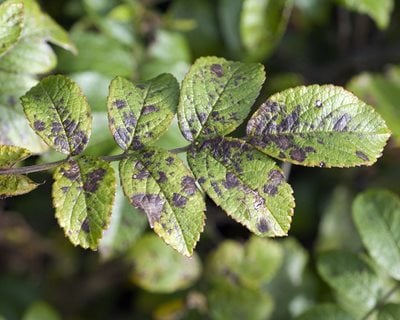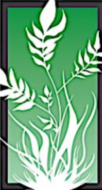On April 8th, 2025 Andy Tekanz provided us with a informative and understandable talk on Garden Disease Mediation. Andy Tekanz is a retired plant scientist / pathologist. He explained that plant diseases are primarily a bacteria disease, a virus disease or a fungas. A virus does not reproduce on its own. It is spread by insects who feed on an infected plant and then feed on a new plant, spreading the virus disease. A virus could also be spread by an open wound such as cutting an infected plant and then not cleaning the blade of your clippers and cutting a good plant. The virus could enter through the cut. A bacterial disease or fungi can reproduce on its own and can be spread by wind, rain, soil and insects. the bacteria disease can also be passed by clippers if you don’t clean your blades. If you are cutting diseased leaves & plants, Andy Tekanz recommended using isopropyl alcohol, (70% concentration) (rubbing alcohol) on the blades. I found a web site from the University of Minnesota that recommended the same thing or an alternative was Lysol Spray. A fungas disease can be spread by wind, rain, insects and birds.
The following is from my notes and photos and is not all of the information provided by Andy Tekanz. He is an expert with a wealth of knowledge.
Dahlia Gall: Cannot be treated. Dispose of infected bulbs in the garbage or burn. Do not put in the Compost. Gall is a bacteria disease so it can infect the soil. and be transmitted through the soil to other Dahlia plants. One suggestion is once you remove your Dahlia bulbs in the fall. Inspect them. If you have either Crown or Leaf Gall, dispose of those bulbs and plant the good bulbs in a different location next spring. That way if there is gall bacteria in the soil, it won’t impact the healthy plants. You can plant a different annual plant in the original location and the flowers should not be affected. If you order Dahlias or buy them, inspect their roots for signs of gall.
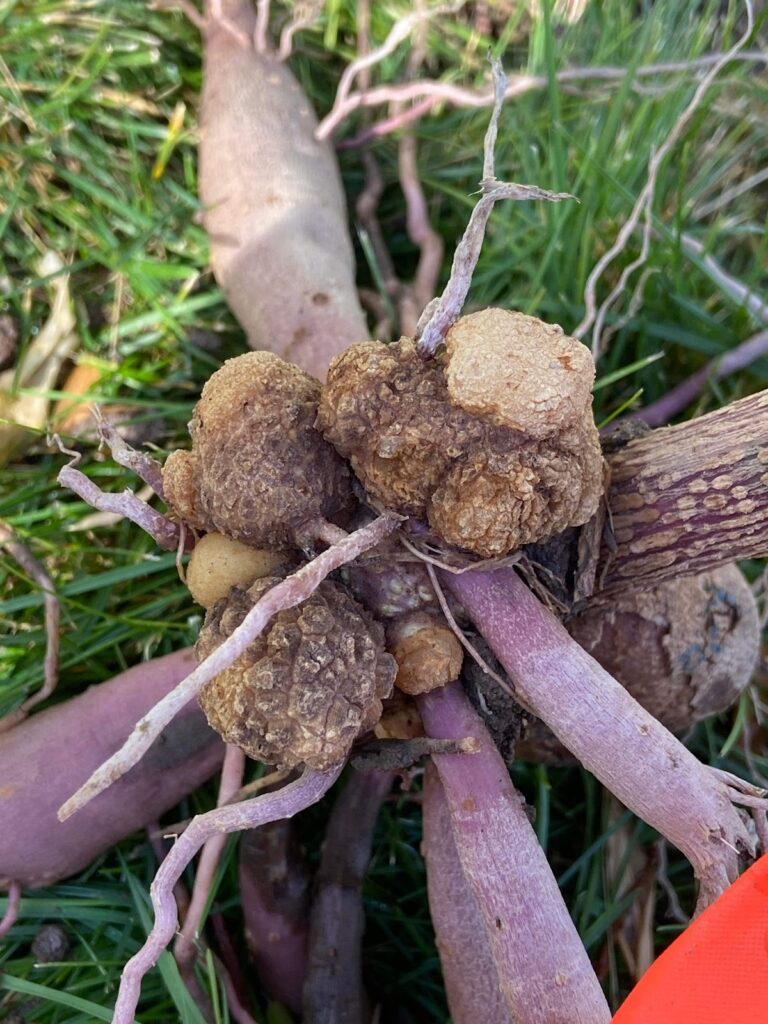
The photo above is Crown Gall. The photo below is Leaf Gall.
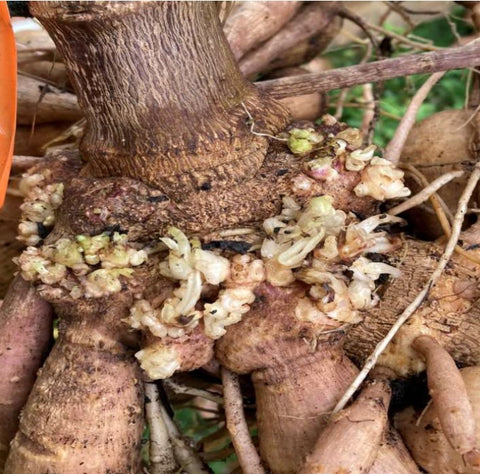
Canna Lily Virus: is a virus that shows up like yellow streaks in the leaves. the leaves will eventually turn brown. There is no cure. Remove the affected plants and throw them in the garbage or burn them. Do not put them in the compost. Below is an example of the virus.
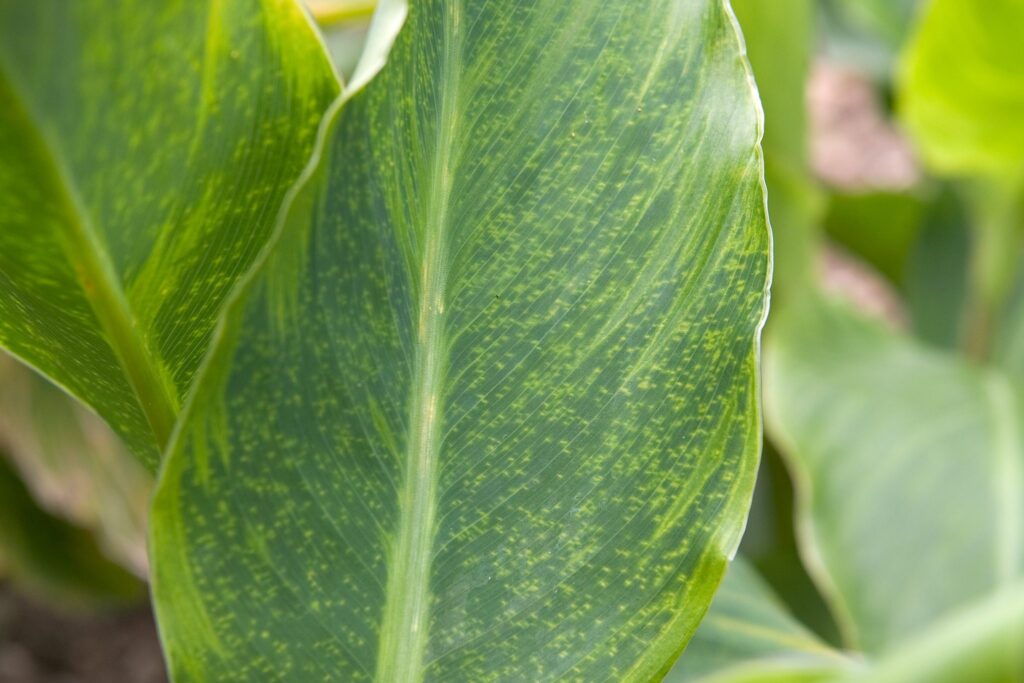
Black Knot Disease is a fungus that can affect Mayday, Cherry and Shubert Chokecherry trees. The spores from the fungus are spread by wind, rain, insects and birds. The way to treat it is to cut the branch far enough away from the black knot. Clean your cutting tool blade after each cut so that the fungus doesn’t spread. Throw the diseased branches into the garbage. Do not put in it the compost. Burning is not recommended. Below is an example of Black Knot.

General Advice from Andy Tekanz: When you remove leaves from vegetables that are not diseased, don’t leave them on the ground, put them in the compost. Rotate where you grow your vegetables. One year everything may be great but if you keep planting the same vegetable in the same spot, you increase the chances of a virus or bacteria disease taking over. One alternative is to turn the soil. If you are experiencing Tomato Blossom End Rot, it is not a disease, it is a lack of calcium or inconsistent watering. Remove affected plants in the fall and put them in the garbage. To supplement the calcium you can used diluted milk, or a powdered milk mix or egg shells (the egg shells take time to break down but if you continue to add year after year, the calcium level will increase). Water the base of the tomato plants and avoid watering overhead. If you do water overhead, do it in the morning to allow leaves to dry out. You are trying to avoid moisture sitting on the leaves overnight. Below is a photo of Blossom End Rot.
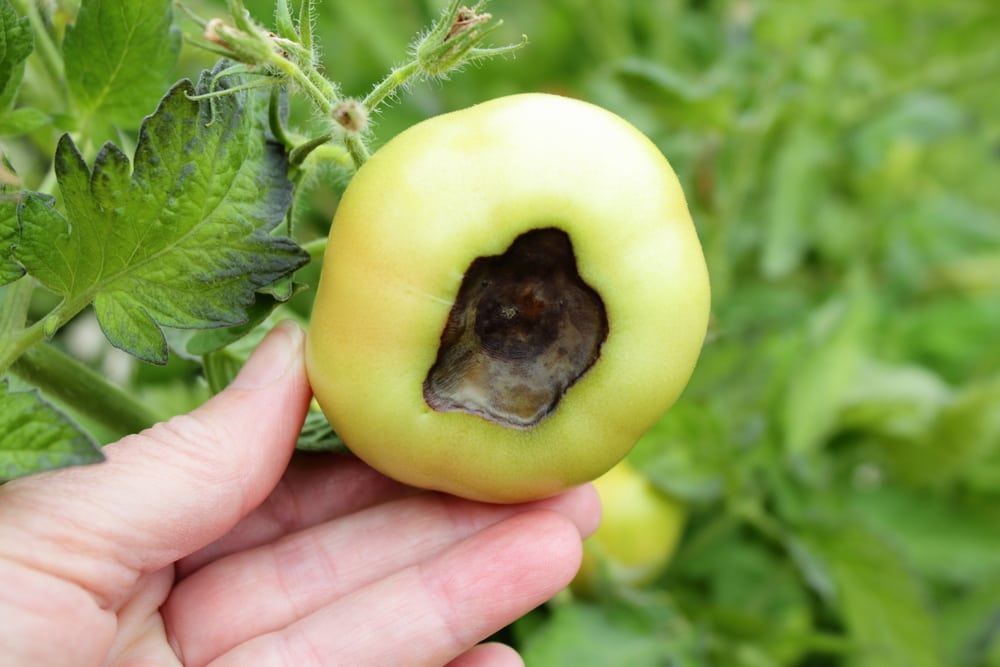
Roses Black Spot: Affects the leaves. Things to do. Don’t water overhead. Water at the base of the roses and avoid the leaves. If you do water the leaves do it in the morning so that the leaves have a chance to dry out during the day. You are trying to avoid having moisture on the leaves overnight. Use a protective fungicide in early summer and repeat every 7-10 days if weather is favourable. Use a copper based product such as Dr. Doom. Below is a photo of Black Spot on roses.
